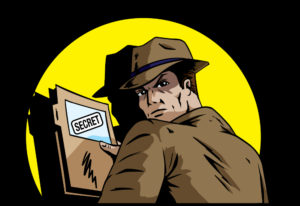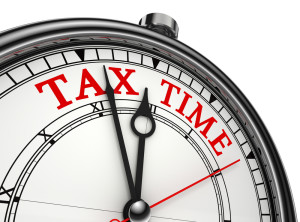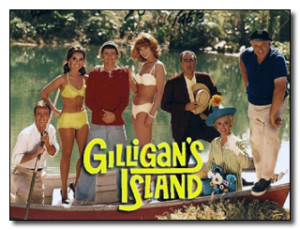A Nondisclosure Agreement (NDA) has become one of the basic standard documents in every company’s wallet. Between the rising swell of Baby Boomer owners entertaining exit planning, and greater caution surrounding the legal issues of strategic partnering, an NDA is now the standard next step following many initial exploratory conversations.
What should you protect in an NDA? (Note: I am not an attorney, and I don’t create Nondisclosure Agreements for clients.)
 First, there is the question of who is covered by the agreement. Most allow for advisors to each party to see the agreement. That can encompass accountants, attorneys, consultants, bankers and employees. I think employees present the greatest risk, since they are the most likely to personally benefit from information about customers, vendors and pricing.
First, there is the question of who is covered by the agreement. Most allow for advisors to each party to see the agreement. That can encompass accountants, attorneys, consultants, bankers and employees. I think employees present the greatest risk, since they are the most likely to personally benefit from information about customers, vendors and pricing.
Some attorneys include language requiring every person who shares the information to sign and return a separate copy. That is cumbersome, and opens the question of enforcement. If you talk to someone on the other side of the transaction, and don’t have a signed copy of the agreement first, have you voided that condition yourself?
Try to keep the responsibility for protecting information with the other side. One mechanism is to have each person who sees information add their signature to the agreement, with language that makes it the other party’s responsibility to only share with signatories. At a minimum, the other party should be required to make certain everyone on their side is informed of the confidential nature of the information. Electronically stamping everything “Confidential” and converting it into pdf is also a basic caution.
Then there are decisions about what information to share. Most potential acquirers are concerned about customer concentration in sales. They will ask for customer purchasing history as one of the first items in preliminary examination of your company.
That is a legitimate concern, but it doesn’t mean they need the names of the customers until much later in the process. We provide redacted reports, identifying customers by letters or numbers.
The same type of common sense applies to vendors, employee compensation and margins by product line. You can provide sufficient information for valuing the business without the details. No matter how honest or well intentioned the other party may be, he or she will remember that you are making 10% more on a specific product, or are selling substantial amounts to a customer they thought was all theirs.
Finally, we recommend that the Nondisclosure Agreement go beyond just keeping information confidential. It should always include a non-employment clause regarding your employees. Non-solicitation is okay, but it’s hard to prove if the company claims the employee approached them. Just make it simple; they can’t hire any employee for two years following your discussions. You may be surprised at how many potential partners balk at this condition.
Always have a qualified attorney draft any Nondisclosure Agreement, but there is no need to go wild. One page is typically insufficient, but more than two pages and you are usually loading it up with conditions that are either irrelevant or unenforceable.
No NDA will stop someone from being dishonest. It is intended to make plain what you consider yours, and how you expect it to be handled. As in any other business transaction, what’s written on the paper doesn’t replace trust.
Over 1,000 business people subscribe to Awake at 2 o’clock. Please share it with others who are part of the 3% of Americans who provide 60% of all new jobs! Thanks.
 Exit planning is the process of developing a business owner’s strategy for what may be the biggest financial transaction of his or her life…the transfer of the business. That strategy may be a succession to the next generation of family. It could be a sale to employees. It may be a sale to another entrepreneur, or acquisition by a larger company. In some cases, it could require an orderly dissolution.
Exit planning is the process of developing a business owner’s strategy for what may be the biggest financial transaction of his or her life…the transfer of the business. That strategy may be a succession to the next generation of family. It could be a sale to employees. It may be a sale to another entrepreneur, or acquisition by a larger company. In some cases, it could require an orderly dissolution. Tax complexity makes handling almost any transaction without professional advice foolhardy, but are we really supposed to just draw a line through 16 weeks, or 1/3 of the annual business cycle?
Tax complexity makes handling almost any transaction without professional advice foolhardy, but are we really supposed to just draw a line through 16 weeks, or 1/3 of the annual business cycle? Bob is calculating what the brokerage industry calls “Seller’s Discretionary Benefits” or SDE. While it is a legitimate way to look at the full value of business ownership, ball park valuations of 4-5 times pre-tax earnings don’t apply to that calculation. Cash flow expensed for benefits (rather than dropping to a taxable bottom line), isn’t included in those earnings multiples. The traditional multiple for a small business sale averages 2.5 time SDE, or half of what Bob is estimating. We are immediately reducing the likely price to something like $1,250,000.
Bob is calculating what the brokerage industry calls “Seller’s Discretionary Benefits” or SDE. While it is a legitimate way to look at the full value of business ownership, ball park valuations of 4-5 times pre-tax earnings don’t apply to that calculation. Cash flow expensed for benefits (rather than dropping to a taxable bottom line), isn’t included in those earnings multiples. The traditional multiple for a small business sale averages 2.5 time SDE, or half of what Bob is estimating. We are immediately reducing the likely price to something like $1,250,000. Perhaps the most amusing application was in “Gilligan’s Island.” The seven castaways fill their assignments well. There’s Gilligan (Sloth), the Skipper too (Wrath). The millionaire (Thurston Howell — Greed) and his wife (Gluttony). The movie star (Ginger — Lust, of course); The professor (Pride) and Mary Ann (Envy), here on Gilligan’s Isle (Hell?)
Perhaps the most amusing application was in “Gilligan’s Island.” The seven castaways fill their assignments well. There’s Gilligan (Sloth), the Skipper too (Wrath). The millionaire (Thurston Howell — Greed) and his wife (Gluttony). The movie star (Ginger — Lust, of course); The professor (Pride) and Mary Ann (Envy), here on Gilligan’s Isle (Hell?)